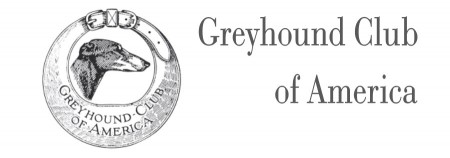Evaluation of your ‘baby’ puppies begins as soon as they are safely in the ‘nest’ and have been checked for any birth defects such a cleft palate, badly kinked tails etc. While these things can be corrected surgically, they preclude the puppy from a ‘Show’ career and any future breeding plans.
When the puppies are settled, relaxed and laid stretched out, look at their overall confirmation; what are your first impressions? Do they look short or long in body? Is there a good reach of neck with a strong crest? Does the sweep of the lower rib line extend well back or do they cut up to soon? Is the tail well set on, long and straight? Depth of foot is evident even at this early stage and can indicate a strong foot while a shallow open toed foot will indicate a flatter foot.
Start taking notes from their earliest days as there will be different aspects you will pick up and can revisit as they develop.
For the first 3 days of their lives, your puppy will have approximately the same angulation as he or she will have as an adult dog. Starting at the neck, assess their shoulder placement, upper arm length and angulation. The top of the shoulder and the back of the elbow joint should be in line, with the front point of the upper arm forming an isosceles triangle i.e. The length of the shoulder and the upper arm being of near equal length. Check the length of rib cage and loin, which can easily be seen and felt in this relaxed position i.e. if the ribs are short this will not enhance a future flowing sweep up.
Finally, width across the stifle, length of hip to stifle, stifle to hock and hock length; this is all best evaluated now before the puppies start to grow and change. Taking notes at these first viewings and comparing them as they grow and start to move about will help with your final selection.
Obviously, there are things like the shape of their heads and length of their legs which cannot be taken into account at this time but the overall picture should be still be there as the long graceful curves we expect to see with no sharp angles.
Remembering too that you will have hoped to improve on some aspects of their sire and dam; be it better angulation front or rear, longer rib or loin etc, so what has this particular breeding achieved? And at what expense? There is usually something gained and something lost in each breeding.
Good front angulation is harder to achieve than good hind angulation, so keeping the hard-won achievements has to be given precedence over some things that can more easily be achieved in one or two generations.
For the next week the puppies should be allowed to grow and fill out, until the exciting stage when their eyes open, and begin to focus around 10-12 days. Looking at eye colour, are they light blue, dark blue or dark? A dark eye is preferred but blue eyes on a puppy this age may be related to their coat colour, usually very light blue eyes indicate a light eyed adult.
As the puppies begin to move around the whelping box around 3 weeks you can start to take notes on the width body, how is the fore chest? Is there sufficient ‘in-fill’ between the front legs. Pasterns are still usually quite floppy until the puppies start to get up on their legs and then they begin to strengthen.
In four to six weeks the puppies will have developed their breadth of rib, and you will be able to note which have sufficient spring of rib to allow good heart and lung space. Flat sided puppies become evident and can be noted, as this is unlikely to change.
Around six weeks, movement starts to come together as the strength in their legs continues, also they start to lengthen in leg, they start to look like little hounds. It is important to allow muscles to develop by allowing free play. Muzzles will start to lengthen and you can check the bite, ears will fold back, and length and texture can be noted. Tails are often carried very high at this age, but if the tail set is good and not high on the croup this will settle.
At eight weeks I like to take photos of the puppies as I find this helps to evaluated ‘Balance’; do the angles fore and aft match, giving a flowing appearance? Often the top-line over the last 3 ribs and loin can appear exaggerated, but this will strengthen as the puppies grow and should only be noted at this age. A flat top-line at this age is unlikely to change and should be added to the overall evaluation.
Their movement now should be able to be evaluated, watch closely the coming the going, front legs should be straight and strong the pasterns gently sloping, not upright or let down on week feet. Both front and rear legs should not appear wide apart or too close together as they move. I do not like to move puppies too fast just to assess large exuberant movement, well put together puppies who exhibit correct ‘free’ movement coming and going is a much more important factor.
At ten weeks you should be happy with your choice, with all the important aspects of the breed standard being apparent. A graceful, well put together puppy who moves out freely with the beginnings of easy power; who will develop with good food, regular exercise and dedication from the owner. We understand no puppy is perfect, and being able to identify and accept their faults and appreciate their beauty is an important part of your evaluation so that you can continue to improve your breeding.
Written by Barbara Hargreaves, Mistweave
Submitted by Patti Clark
